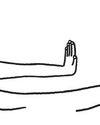
The computer scientists Walter J. Scheirer argues that our political fears about the use of deceptive deepfakes are misplaced.
“There’s a video of Gal Gadot having sex with her stepbrother on the internet.” With that sentence, written by the journalist Samantha Cole for the tech site Motherboard in December, 2017, a queasy new chapter in our cultural history opened. A programmer calling himself “deepfakes” told Cole that he’d used artificial intelligence to insert Gadot’s face into a pornographic video. And he’d made others: clips altered to feature Aubrey Plaza, Scarlett Johansson, Maisie Williams, and Taylor Swift.
Porn, as a Times headline once proclaimed, is the “low-slung engine of progress.” It can be credited with the rapid spread of VCRs, cable, and the Internet—and with several important Web technologies. Would deepfakes, as the manipulated videos came to be known, be pornographers’ next technological gift to the world? Months after Cole’s article, a clip appeared online of Barack Obama calling Donald Trump “a total and complete dipshit.” At the end of the video, the trick was revealed. It was the comedian Jordan Peele’s voice; A.I. had been used to turn Obama into a digital puppet.
This story is from the November 20, 2023 edition of The New Yorker.
Start your 7-day Magzter GOLD free trial to access thousands of curated premium stories, and 9,000+ magazines and newspapers.
Already a subscriber ? Sign In
This story is from the November 20, 2023 edition of The New Yorker.
Start your 7-day Magzter GOLD free trial to access thousands of curated premium stories, and 9,000+ magazines and newspapers.
Already a subscriber? Sign In

BADDIE ISSUES
\"Wicked\" and \"Gladiator II.\"

LET'S MAKE A DEAL
\"Death Becomes Her\" and \"Burnout Paradise.\"

ANTI HEROES
\"The Franchise,\" on HBO.

FELLOW-TRAVELLERS
The surprisingly sunny origins of the Frankfurt School.

NOW YOU SEE ME
John Singer Sargent's strange, slippery portraits of an art dealer's family.

PARIS FRIEND - SHUANG XUETAO
Xiaoguo had a terror of thirst, so he kept a glass of water on the table beside his hospital bed. As soon as it was empty, he asked me to refill it. I wanted to warn him that this was unhealthy - guzzling water all night long puts pressure on the kidneys, and pissing that much couldn't be good for his injury. He was tall, though, so I decided his insides could probably cope.

WILD SIDE
Is Lake Tahoe's bear boom getting out of hand?

GETTING A GRIP
Robots learn to use their hands.

WITHHOLDING SEX FROM MY WIFE
In the wake of [the] election, progressive women, who are outraged over Donald Trump's victory at the ballot box, have taken to social media with public, vengeful vows of chastity. - The Free Press.

DEADLINE EXTENSION
Old age, reborn.